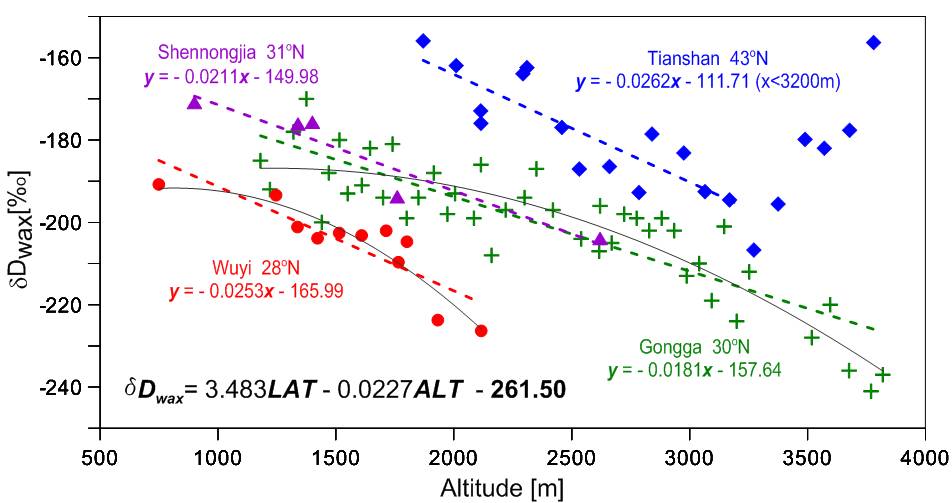PhD student LUO Pan and his teacher DING Zhongli study the leaf wax-derived n-alkane values along three soil altitudinal transects, at different latitudes, in the Wuyi, Shennongjia and Tianshan Mountains in China, to investigate gradients and the apparent fractionation between leaf wax and precipitation.
Mean value of εwax-p in the extreme humid WuyiMountains is quite negative (−154‰), compared to the humid Shennongjia (−129‰) and the arid (but with abundant summer precipitation) Tianshan Mountains (−130‰), which suggests aridity or water availability in the growing season is the primary factor controlling soil/sediment εwax-p. Along the Tianshan transects, values of εwax-p are speculated to be constant with altitude; while along the Wuyi and Shennongjia transects, εwax-p are also constant at the low-mid altitudes, but become slightly more negative at high altitudes which could be attributed to overestimates of precipitation δD or the vegetation shift to grass/conifer.
Additionally, a reversal of altitude effect in the vertical variation of δDwax was found in the alpine zone of the Tianshan Mountains, which might be caused by atmospheric circulation change with altitude. This implies that the paleo-circulation pattern and its changes should also be evaluated when stable isotope-based paleoaltimetry is applied.
Luo et al. Empirical relationship between leaf wax n-alkane δD and altitude in the Wuyi,Shennongjia and Tianshan Mountains, China: Implications for paleoaltimetry. Earth and Planetary Science Letters, 2011, 301(1-2): 285-296(Download Here)

Fig. Empirical δDwax–altitude relationship synthesized from altitudinal transects in China. Results of the Gongga transect are from Jia et al. (2008). (Image by LUO Pan)